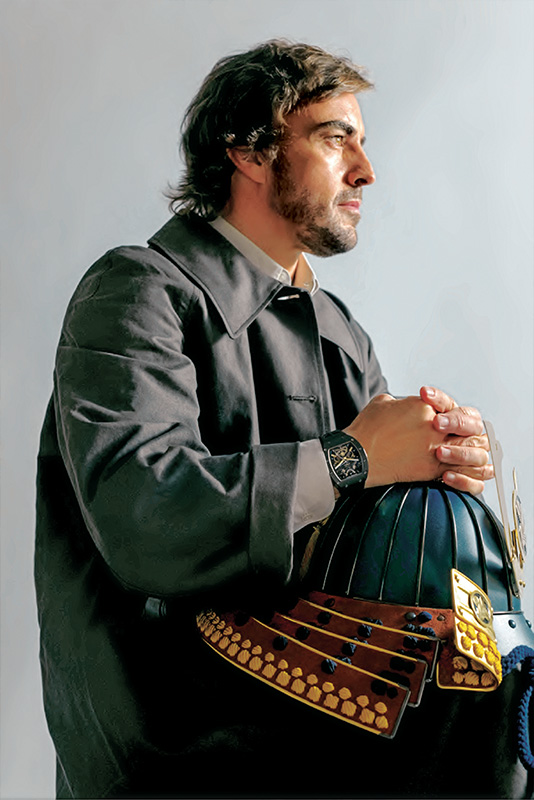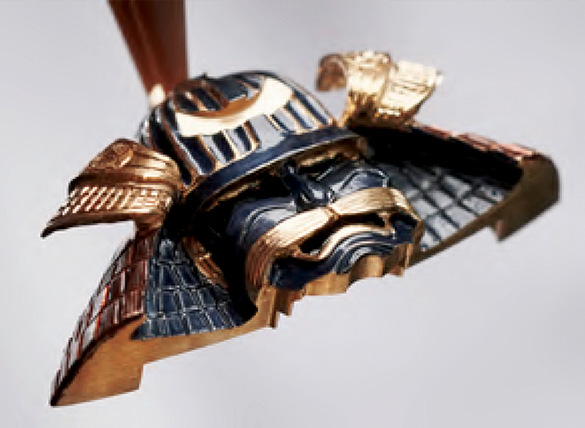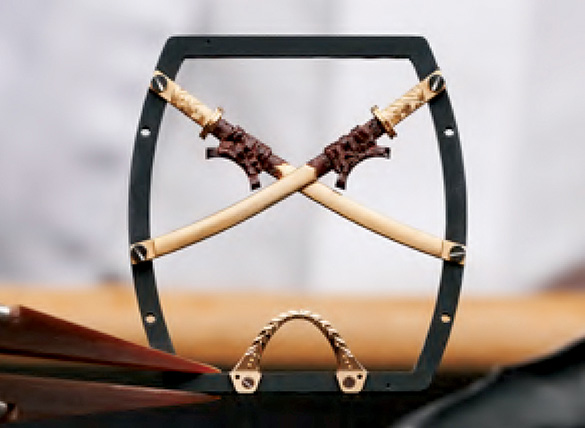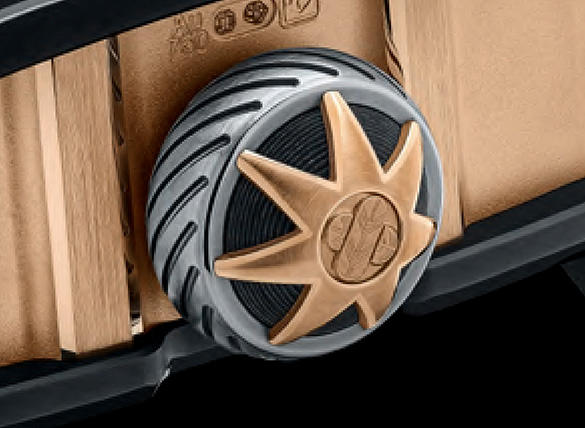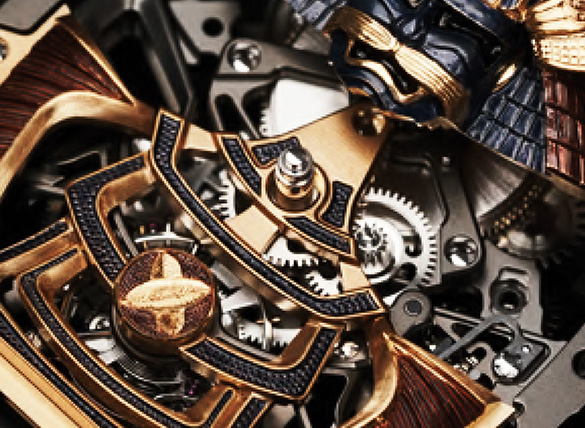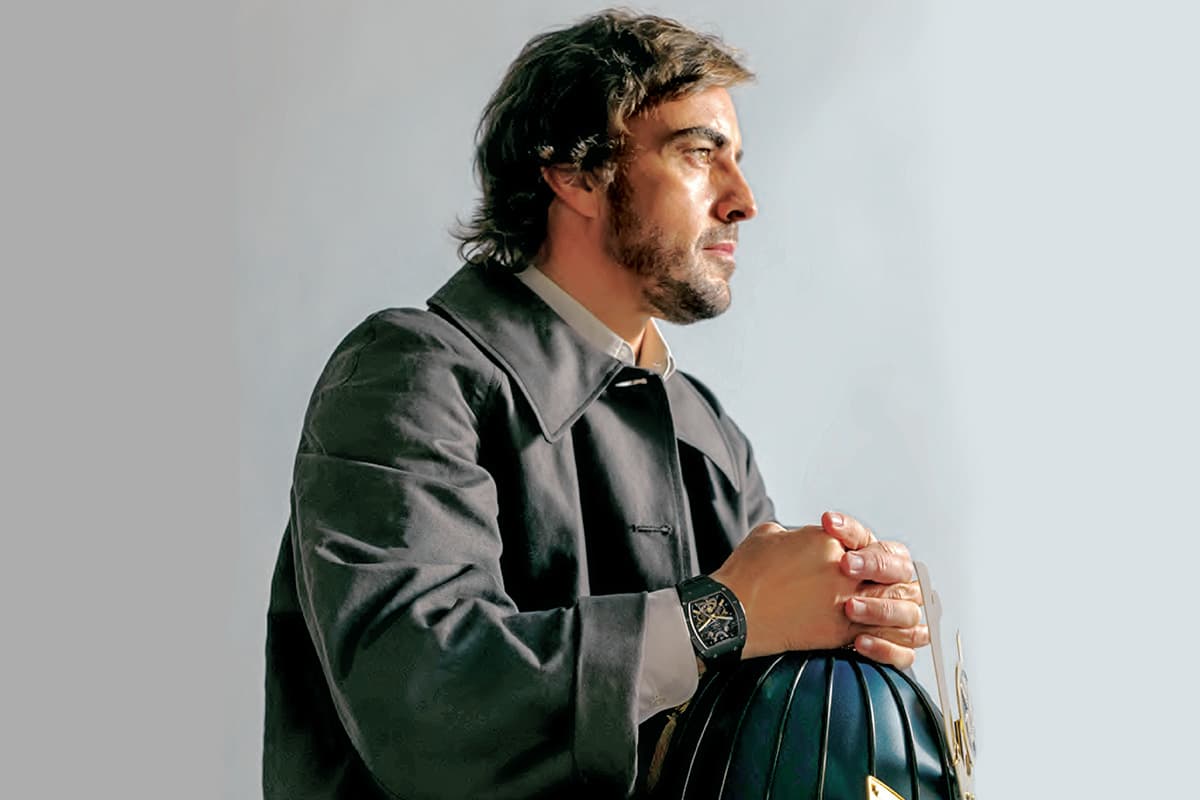
This article first appeared in Options, The Edge Malaysia Weekly on May 16, 2022 - May 22, 2022
Richard Mille’s new RM 47 Tourbillon harks back to the sources of Japanese crafting tradition in proposing an allegory of bushido, the Samurai code of ethics whose values still prevail in Japanese society today
For more than a thousand years, carpenters have been rebuilding the famous shrines of Ise, sacred sanctuaries of the Shinto religion, every twenty years. In the same manner, men and women throughout the Japanese archipelago have passed on the secular traditions of working wood, steel and glass from generation to generation. It is understandable that these unique works — born of a melding of technical excellence, the patience of the craftsman and his quest for beauty — arouse passionate interest today.
In the course of a friendly conversation with Formula 1 world champion and brand partner, Fernando Alonso, who is also passionate about Japanese traditional arts and Samurai philosophy, Richard Mille decided to launch an artistic watch project of a new kind. The team has once again demonstrated its mastery of haute horlogerie techniques as well as excellence in working materials while proving itself capable of collaborating with talented craftsmen.
This has made possible an exceptional timepiece, the fruit of intense reflection and nearly four years of design work. The
RM 47 Tourbillon — its interior housing a Samurai’s armour crafted entirely by hand — is a work of art aesthetically conceived as a tribute to Japanese culture. It is a combination of art and spirituality, a new way of transcending the limits of creation.
Ethics, symbolism and the Samurai
A work of art of impressive realism, the RM 47 Tourbillon incorporates an extremely compact calibre, specially designed to make room for a stylised Samurai suit of armour that recalls the bushido spirit. The boldness of its volumes gives this decoration such presence that it creates the impression of sculpture almost as much as engraving. This armour comes to life in 3N yellow gold, recalling the leaves of shining gold used in ancient Japan to embellish the country’s finest shrines, such as Kinkaku-ji in Kyoto, as well as certain works of traditional craftsmanship like Wajima-nuri lacquerware.
It is not without reason that the Samurai armour at the heart of the RM 47 Tourbillon sports the crest of the Asano clan. Originating from Hiroshima, this family is the finest embodiment of the bushido spirit. Asano Naganori, the daimyo, or chief of the family fiefdom at the turn of the 18th century, was the lord of the 47 rnin who avenged his death before following him into the afterworld. The Asano family’s kamon is featured on the tourbillon at 6 o’clock.
Each Samurai clan had its own kamon, a heraldic sign borne on their clothes, their swords and the banners carried into battle fields. Representing two crossed falcon feathers, this emblem was also very finely engraved on the warriors’ helmet winglets. In Japanese feudal iconography, the falcon expressed strength in war and the authority of the sovereign. Indeed, the practice of falconry by local lords was subject to authorisation by Tokugawa Ieyasu, the founder of the Edo shogunate, and it was perceived as a great privilege.
The crown, crafted from titanium, CarbonTPT and polished 3N yellow gold, has a Japanese maple leaf for its motif. An allegory of beauty, grace and the brevity of life, it is the autumnal equivalent of the cherry blossom, symbol of rebirth during spring. Every year in November, the maple leaves take on flamboyant colours before detaching from the boughs to fall in a tourbillon-like movement. As early as the Heian period, over a thousand years ago, the aristocracy had already perceived this spectacle — later popularised under the name momijigari — as a significant motif of Japanese aesthetics.
The time of a Samurai
Like a guard, the Samurai of the RM 47 Tourbillon comprises various elements that provide precious protection for the manually wound Calibre RM47. From either side of the case, the tourbillon carriage is discreetly visible, along with certain components of the gear train, giving substance to this remarkable warrior. With its engraved and painted decoration, the movement acquires a rare depth, a clear indication of the attention paid to detail and finishes.
To ensure optimal functioning of the movement, the base-plate and skeletonised bridges are made of Grade 5 titanium, a biocompatible alloy often used in the aerospace sector, with a black PVD coating. This combination offers high corrosion resistance, and yields remarkable rigidity and perfectly flat surfaces. While deliberately discreet, the workmanship on the bridges and baseplate is nonetheless exceptional. The complex lines and effect of the hand-finishing are truly representative of Richard Mille’s technical demands.
The movement’s chronometric precision, over the full 72 hours of power reserve, is ensured by a tourbillon regulator. Guaranteeing optimal regulating precision, the balance-wheel is of a variable inertia type, equipped with four inertia-blocks. Energy performance is optimised by means of a fast-rotating barrel (completing a full rotation in six hours instead of 7.5), favoured for its excellent running rate regularity, largely due to reductions in the internal adhesion of the mainspring.
To limit torque losses, the barrel and centre pinion have teeth exhibiting a central involute profile, with an elliptical curvature that compensates for any variations in engagement and improves the efficiency of the gear train. To forestall any problem during winding, facilitated by a progressive-recoil barrel click, the dynamo-metric crown protects the assembly, uncoupling as soon as the watch is fully wound to avoid over-tensioning the mainspring or breaking the winding stem.
Movement and case, as well as the decorative features of the Samurai armour, all bear witness to a design approach intended to guarantee the harmonious and effective integration of all the various elements of the RM 47 Tourbillon. The Samurai is thus an integral part of the calibre, which, in turn, fits perfectly in the case. The barrel-shaped case comprises three parts with a caseband in 3N yellow gold comes with a bezel and a caseback in black TZP ceramic. This lightweight material is particularly resistant to scratching and has a low thermal conductivity coefficient. Assembled with the aid of 20 spline screws, the case is water-resistant to 50m, thanks to two O-ring seals in nitrile rubber.
The case finishes, like those of the movement, reveal an approach as rigorous as that of the Samurai’s armour. The calibre features drawn and satin-finished surfaces, hand-polished chamfers, micro-blasted milled faces and diamond-polished gear mouldings. With its matt surface and polished edges emphasising the case’s barrel shape, the black ceramic is ideal for this exceptional composition, where mechanical mastery and artistic creation are combined in perfect balance.
Save by subscribing to us for your print and/or digital copy.
P/S: The Edge is also available on Apple's App Store and Android's Google Play.

